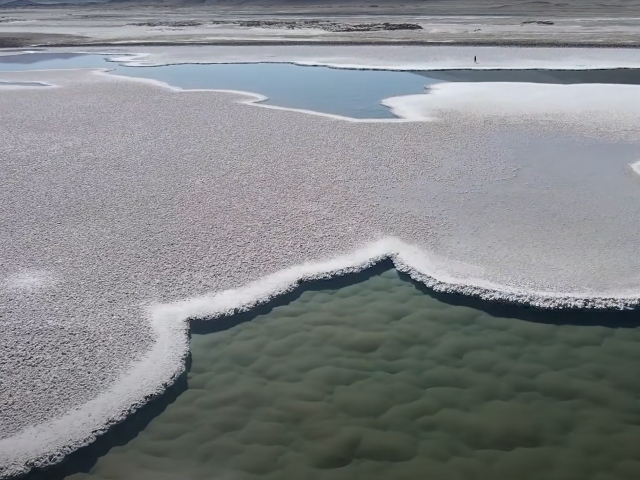
-
“It’s Unlike Anything I’ve Ever Seen” – Scientists Discover Previously Unknown Prehistoric World On Our Planet [Video]
11 Dec 2023 by Tayla in Conservation, Environment, Lifestyle, Nature, Science, World
[imagesource:youtube/universityofcoloradoboulder]
It is the year 2023, and a new, previously undocumented ecosystem has just been discovered.
A team of scientists has managed to unearth an extraordinary ecosystem in the Puna de Atacama desert highlands of Argentina. The unique environment is exciting for scientists as it may potentially house life forms dating back around 3.5 billion years, aligning with the emergence of life on Earth.
At around 3,600 metres above sea level, in a place where no roads go, scientists found the exotic prehistoric world new to science, per Mashable:
“This lagoon could be one of the best modern examples of the earliest signs of life on Earth,” geologist Brian Hynek, one of the scientists who found this elusive ecosystem, said in a statement. “It’s unlike anything I’ve ever seen or, really, like anything any scientist has ever seen.”
Among the salt plains, a system of greenish lagoons house vast bacterial communities, called stromatolites, that create layered mounds as they expand – a glimpse into Earth, billions of years ago, when primitive organisms first appeared on our planet.
“It’s just amazing that you can still find undocumented things like that on our planet,” Hynek, a professor at CU Boulder, marveled.
Despite being one of the driest places on Earth, with sparse rainfall and intense solar radiation, the desert’s environment exemplifies the resilience of early life, explained BNN Breaking.
Present-day stromatolites found along coastlines, such as those in the Bahamas, are relatively diminutive, measuring only a few millimetres in size. In contrast, stromatolites from the Early Archaic period were thought to be colossal, towering up to six metres in height. The formations in the lagoons of the Puna de Atacama more closely resemble these ancient communities than their contemporary equivalents. The expansive stromatolites uncovered in the Atacama Desert’s lagoons are too extensive to be considered representative of present-day ecosystems.
The recently identified ecosystem may also offer insights into the past conditions of the Martian landscape when Mars was once a temperate, aqueous planet featuring lakes and even tumultuous rivers.
“If life ever evolved on Mars to the level of fossils, it would have been like this,” Hynek said. “Understanding these modern communities on Earth could inform us about what we should look for as we search for similar features in the Martian rocks.”
Hynek stumbled upon this ecosystem while examining satellite images of the Atacama highland desert. The ecosystem spans about 25 acres, engrossing around 12 lagoons with an ‘alien’ appearance from an aerial perspective.
Check out this new world shot on a drone and shared on YouTube:
[source:mashable]Latest News
-
Powerful South African Short Film ‘The Last Ranger’ Scoops Up Awards And International Praise
[imagesource: Cindy Lee Director/Facebook] A compelling South African short film, The L...
-
Caprice Summer Has Started With Brunch (But Better) This Saturday + Other Lush Camps Bay Parties
[imagesource: Instagram/cafecaprice] Is it just me or has Summer been taking its sweet ...
-
Notre-Dame Cathedral In Paris Restored And Ready For Grand Reopening After Devastating Fire
[imagesource:wikimedia] After five years of work and millions in donations, The Notre-D...
-
Self-Destructing Number Plates: The Future Of Gauteng’s Roads Or Spy-Tech Fantasy?
[imagesource:worldlicenseplates.com] What sounds like a James Bond movie is becoming a ...
-
I Changed My Relationship With Food And You Won’t Believe What Happened Next
[imagesource:supplied] As the festive season approaches, it's time to deck the halls, g...
-






























